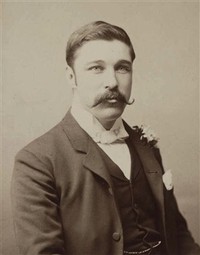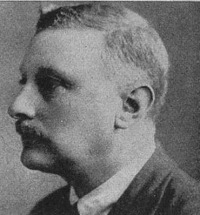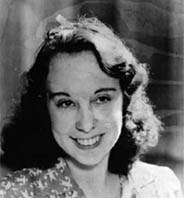
Miles Burton
AKA John Rhode, Cecil Waye, Cecil J.C. Street, I.O., F.O.O..
Cecil John Charles Street, MC, OBE, (1884 - January 1965), known as CJC Street and John Street, began his military career as an artillery officer in the British army. During the course of World War I, he became a propagandist for MI7, in which role he held the rank of Major. After the armistice, he alternated between Dublin and London during the Irish War of Independence as Information Officer for Dublin Castle, working closely with Lionel Curtis. He later earned his living as a prolific writer of detective novels.
He produced two long series of novels; one under the name of John Rhode featuring the forensic scientist Dr Priestley, and another under the name of Miles Burton featurin
If you like author Miles Burton here is the list of authors you may also like
Buy books on AmazonMiles Burton similar authors
-

Fergus W. Hume
Fergusson Wright Hume (1859–1932), New Zealand lawyer and prolific author particularly renowned for his debut novel, the international best-seller The Mystery of a Hansom Cab (1886).
Buy books on Amazon
Hume was born at Powick, Worcestershire, England, son of Glaswegian Dr. James Collin Hume, a steward at the Worcestershire Pauper Lunatic Asylum and his wife Mary Ferguson.
While Fergus was a very young child, in 1863 the Humes emigrated to New Zealand where James founded the first private mental hospital and Dunedin College. Young Fergus attended the Otago Boys' High School then went on to study law at Otago University. He followed up with articling in the attorney-general's office, called to the New Zealand bar in 1885.
In 1885 Hume moved to Melbourne. While h -

Freeman Wills Crofts
Born in Dublin of English stock, Freeman Wills Crofts was educated at Methodist and Campbell Colleges in Belfast and at age 17 he became a civil engineering pupil, apprenticed to his uncle, Berkeley D Wise who was the chief engineer of the Belfast and Northern Counties Railway (BNCR).
Buy books on Amazon
In 1899 he became a fully fledged railway engineer before becoming a district engineer and then chief assistant engineer for the BNCR.
He married in 1912, Mary Bellas Canning, a bank manager's daughter. His writing career began when he was recovering from a serious illness and his efforts were rewarded when his first novel 'The Cask' was accepted for publication by a London publishing house. Within two decades the book had sold 100,000 copies. Thereafter he con -

John Bude
John Bude was a pseudonym used by Ernest Carpenter Elmore who was a British born writer.
Buy books on Amazon
He was born in 1901 and, as a boarder, he attended Mill Hill School, leaving in 1919 and moving on to Cheltenham where he attended a secretarial college and where he learned to type. After that he spent several years as games master at St Christopher School in Letchworth where he also led the school's dramatic activities.
This keen interest in the theatre led him to join the Lena Ashwell Players as stage manager and he took their productions around the country. He also acted in plays produced at the Everyman Theatre in Hampstead, where he lived for a time. He honed his writing skills, whenever he had a moment to spare, in the various dressing rooms that -

Vernon Loder
Vernon Loder was a pseudonym for John Haslette Vahey, an Anglo-Irish writer who also wrote as Henrietta Clandon, John Haslette, Anthony Lang, John Mowbray, Walter Proudfoot and George Varney.
Buy books on Amazon
Vahey started his working life as an apprentice architect, then an accountant before finally turning to writing fiction full-time.
extra bio info from a book blurb -

Charles Kingston
Charles Kingston, born about 1884, was the pen name of Charles Kingston O'Mahoney.
Buy books on Amazon
Little is known of the man but he began his writing career with 'The Viceroys of Ireland', which was published under his own name Charles O'Mahoney in 1912.
He turned to crime fiction in 1921 when he wrote 'Stolen Virtue' and thereafter he wrote 25 twenty crime novels, 17 of them in the golden age of British crime fiction between the two world wars and eight in the 1940s. His final novel was 'Fear Followed On', published posthumously in 1945. Many of his books are set in London.
He died in 1944.
Gerry Wolstenholme -

Raymond W. Postgate
Raymond William Postgate (6 November 1896 – 29 March 1971) was an English socialist, writer, journalist and editor, social historian, mystery novelist, and gourmet who founded the Good Food Guide.
Buy books on Amazon -

Fergus Hume
Fergusson Wright Hume (1859–1932), New Zealand lawyer and prolific author particularly renowned for his debut novel, the international best-seller The Mystery of a Hansom Cab (1886).
Buy books on Amazon
Hume was born at Powick, Worcestershire, England, son of Glaswegian Dr. James Collin Hume, a steward at the Worcestershire Pauper Lunatic Asylum and his wife Mary Ferguson.
While Fergus was a very young child, in 1863 the Humes emigrated to New Zealand where James founded the first private mental hospital and Dunedin College. Young Fergus attended the Otago Boys' High School then went on to study law at Otago University. He followed up with articling in the attorney-general's office, called to the New Zealand bar in 1885.
In 1885 Hume moved to Melbourne. While h -

Richard Hull
Richard Henry Sampson FCA (6 September 1896 – 1973), known by the pseudonym Richard Hull, was a British writer who became successful as a crime novelist with his first book in 1934.
Buy books on Amazon
Wikipedia: http://en.wikipedia.org/wiki/Richard_...
Note: At least two other authors with the same name: Richard Hull-illustrator & Richard Hull-non-fiction -

Josephine Tey
Josephine Tey was a pseudonym of Elizabeth Mackintosh. Josephine was her mother's first name and Tey the surname of an English Grandmother. As Josephine Tey, she wrote six mystery novels featuring Scotland Yard's Inspector Alan Grant.
Buy books on Amazon
The first of these, The Man in the Queue (1929) was published under the pseudonym of Gordon Daviot , whose name also appears on the title page of another of her 1929 novels, Kif; An Unvarnished History. She also used the Daviot by-line for a biography of the 17th century cavalry leader John Graham, which was entitled Claverhouse (1937).
Mackintosh also wrote plays (both one act and full length), some of which were produced during her lifetime, under the pseudonym Gordon Daviot. The district of Daviot, near h -

John Ferguson
John Ferguson (1871-1952) was a Scottish clergyman, playwright, and mystery writer.
Buy books on Amazon
John Ferguson was born at Callander, Perthshire, but has made his home in many sharply contrasted places, from the misty isle of Skye to the sunlit island of Guernsey. And though now a resident in the New Forest near Lymington he lived for six years in the grim Dunimarle Castle in Fife, where Macduff's wife and child were murdered by Macbeth. As a dramatist Mr Ferguson is probably best known for his now famous play Campbell of Kilmohr, which at its first Royalty Theatre production was hailed by the dramatic critic of the Glasgow Herald as 'a new and significant type of Scottish drama'. Of John Ferguson's work one critic has said, 'As no two of his stories ar -

Anthony Berkeley
Anthony Berkeley Cox was an English crime writer. He wrote under several pen-names, including Francis Iles, Anthony Berkeley Cox, and A. Monmouth Platts. One of the founders of The Detection Club
Buy books on Amazon
Cox was born in Watford and was educated at Sherborne School and University College London.
He served in the Army in World War I and thereafter worked as a journalist, contributing a series of humourous sketches to the magazine 'Punch'. These were later published collectively (1925) under the Anthony Berkeley pseudonym as 'Jugged Journalism' and the book was followed by a series of minor comic novels such as 'Brenda Entertains' (1925), 'The Family Witch' (1925) and 'The Professor on Paws' (1926).
It was also in 1925 when he published, anonymously to b -

Freeman Wills Crofts
Born in Dublin of English stock, Freeman Wills Crofts was educated at Methodist and Campbell Colleges in Belfast and at age 17 he became a civil engineering pupil, apprenticed to his uncle, Berkeley D Wise who was the chief engineer of the Belfast and Northern Counties Railway (BNCR).
Buy books on Amazon
In 1899 he became a fully fledged railway engineer before becoming a district engineer and then chief assistant engineer for the BNCR.
He married in 1912, Mary Bellas Canning, a bank manager's daughter. His writing career began when he was recovering from a serious illness and his efforts were rewarded when his first novel 'The Cask' was accepted for publication by a London publishing house. Within two decades the book had sold 100,000 copies. Thereafter he con -

John Rhode
AKA Miles Burton, Cecil Waye, Cecil J.C. Street, I.O., F.O.O..
Buy books on Amazon
Cecil John Charles Street, MC, OBE, (1884 - January 1965), known as CJC Street and John Street, began his military career as an artillery officer in the British army. During the course of World War I, he became a propagandist for MI7, in which role he held the rank of Major. After the armistice, he alternated between Dublin and London during the Irish War of Independence as Information Officer for Dublin Castle, working closely with Lionel Curtis. He later earned his living as a prolific writer of detective novels.
He produced two long series of novels; one under the name of John Rhode featuring the forensic scientist Dr Priestley, and another under the name of Miles Burton featur -

Anthony Weymouth
"Anthony Weymouth" was a pseudonym of Ivo Geikie Cobb, a Harley Street doctor who (amongst other things) wrote detective stories with medical themes.
Buy books on Amazon -

E.C.R. Lorac
Edith Caroline Rivett (who wrote under the pseudonyms E.C.R. Lorac, Carol Carnac, Carol Rivett, and Mary le Bourne) was a British crime writer. She was born in Hendon, Middlesex (now London). She attended the South Hampstead High School, and the Central School of Arts and Crafts in London.
Buy books on Amazon
She was a member of the Detection Club. She was a very prolific writer, having written forty-eight mysteries under her first pen name, and twenty-three under her second. She was an important author of the Golden Age of Detective Fiction. -

J. Jefferson Farjeon
Joseph Jefferson Farjeon was always going to be a writer as, born in London, he was the son of Benjamin Leopold Farjeon who at the time was a well-known novelist whose other children were Eleanor Farjeon, who became a children's writer, and Herbert Farjeon, who became a playwright and who wrote the well-respected 'A Cricket Bag'.
Buy books on Amazon
The family were descended from Thomas Jefferson but it was his maternal grandfather, the American actor Joseph Jefferson, after whom Joseph was named. He was educated privately and at Peterborough Lodge and one of his early jobs, from 1910 to 1920, was doing some editorial work for the Amalgamated Press.
His first published work was in 1924 when Brentano's produced 'The Master Criminal', which is a tale of identity -

E.R. Punshon
Aka Robertson Halket.
Buy books on Amazon
E.R. Punshon (Ernest Robertson Punshon) (1872-1956) was an English novelist and literary critic of the early 20th century. He also wrote under the pseudonym Robertson Halket. Primarily writing on crime and deduction, he enjoyed some literary success in the 1930s and 1940s. Today, he is remembered, in the main, as the creator of Police Constable Bobby Owen, the protagonist of many of Punshon's novels. He reviewed many of Agatha Christie's novels for The Guardian on their first publication. -

Vernon Loder
Vernon Loder was a pseudonym for John Haslette Vahey, an Anglo-Irish writer who also wrote as Henrietta Clandon, John Haslette, Anthony Lang, John Mowbray, Walter Proudfoot and George Varney.
Buy books on Amazon
Vahey started his working life as an apprentice architect, then an accountant before finally turning to writing fiction full-time.
extra bio info from a book blurb -

Lois Austen-Leigh
Lois Emma Austen-Leigh, the granddaughter of Jane Austen’s nephew and thus the great-great niece of Jane herself, was born and brought up in Winterbourne, Gloucester, on 10 July 1883. Her father was the Rector in the town. They later moved to Wargrave in Berkshire. While there Lois kept a diary and she had one unusual pastime in that she rode a motor-cycle wherever she went.
Buy books on Amazon
During the First World War, 1916-1918, she worked as a gardener for the Red Cross in Reading, while her sister, Honor, was a nurse in Malta and France. After the War, she became a companion to her widowed aunt. Then, after her aunt’s death in 1926, she had a house, Cob House built at Aldeburgh on the Suffolk coast for herself and her sister. Possibly this was financed a -

Helen McCloy
Helen McCloy, born as Helen Worrell Clarkson McCloy (she also published as Helen Clarkson), was an American mystery writer, whose series character Dr. Basil Willing debuted in Dance of Death (1938). Willing believes that "every criminal leaves psychic fingerprints, and he can't wear gloves to hide them." He appeared in 13 of McCloy's novels and in several of her short stories. McCloy often used the theme of doppelganger, but in the end of the story she showed a psychological or realistic explanation for the seemingly supernatural events.
Buy books on Amazon -

Henrietta Clandon
"Vernon Loder was a pseudonym for John George Hazlette Vahey (1881-1938), an Anglo-Irish writer who also wrote as Henrietta Clandon, John Haslette, Anthony Lang, John Mowbray, Walter Proudfoot and George Varney. He was born in Belfast and educated at Ulster, Foyle College, and Hanover. Four years after he graduated college he was apprenticed to an architect and later tried his hand at accounting before turning to fiction writing full time." - DSP
Buy books on Amazon -

Fiona Sinclair
Fiona Sinclair was the pen name of Fiona Maud Peters (1919-1961), an actress and writer of five detective books published between 1960 and 1965.
Buy books on Amazon -

E.R. Punshon
Aka Robertson Halket.
Buy books on Amazon
E.R. Punshon (Ernest Robertson Punshon) (1872-1956) was an English novelist and literary critic of the early 20th century. He also wrote under the pseudonym Robertson Halket. Primarily writing on crime and deduction, he enjoyed some literary success in the 1930s and 1940s. Today, he is remembered, in the main, as the creator of Police Constable Bobby Owen, the protagonist of many of Punshon's novels. He reviewed many of Agatha Christie's novels for The Guardian on their first publication. -

Francis Beeding
Francis Beeding is the pseudonym used by two British male writers, John Leslie Palmer (1885-1944) and Hilary St George Saunders (1898-1951). The pseudonym was a joint effort and was apparently chosen because Palmer always wanted to be called Francis and Saunders had once owned a house in the Sussex village of Beeding.
Buy books on Amazon
The pair met when undergraduates at Oxford and remained friends when they both worked at the League of Nations in Geneva and it was while there that they decided to collaborate on writing detective novels.
Discussing their collaboration at one time Saunders commented, 'Palmer can't be troubled with description and narrative, and I'm no good at creating characters or dialogue.' Whatever the reason it certainly worked.
Palmer was d -

John G. Brandon
John Gordon Brandon (1879-1941) was an Australian-born writer who was initially a professional heavyweight boxer.
Buy books on Amazon
He moved to England after the First World War and his first published novel was 'The Big Hunt' (1923). He wrote more than 120 novels, and numerous short stories which were published in 'The Thriller'. After writing another six novels in the 1920s, his most productive decade was the 1930s when he wrote 78 novels. Published posthumously, 'Death Skulks in Soho' (1959) would appear to be his final novel.
He wrote instalments in the long-running Sexton Blake series and his principal characters were Sexton Blake, Patrick Aloysius McCarthy and Arthur Stukeley Pennington.
His son was the writer Gordon Brandon. -

Eimar O'Duffy
It can sometimes seem that Eimar O’Duffy (1893-1935) is most remembered for being a forgotten writer. John Hogan begins his slim 1972 biography of O’Duffy with the line “Eimar Ultan O’Duffy is virtually a forgotten writer”, then quotes Vivian Mercier’s 1946 essay on O’Duffy: “The late Eimar O’Duffy . . . was simply ignored.”
Buy books on Amazon
O'Duffy, of Anglo-Irish stock, became a captain in the Irish Volunteers and was sent by Eoin MacNeill, along with Bulmer Hobson, to stop the 1916 insurrection in Belfast. He wrote a wide variety of books and plays, but it is the Cuanduine trilogy that is his great achievement. King Goshawk and the Birds is the first part of the trilogy and is an important landmark in the Irish comic novel tradition.
(From the Irish Times)